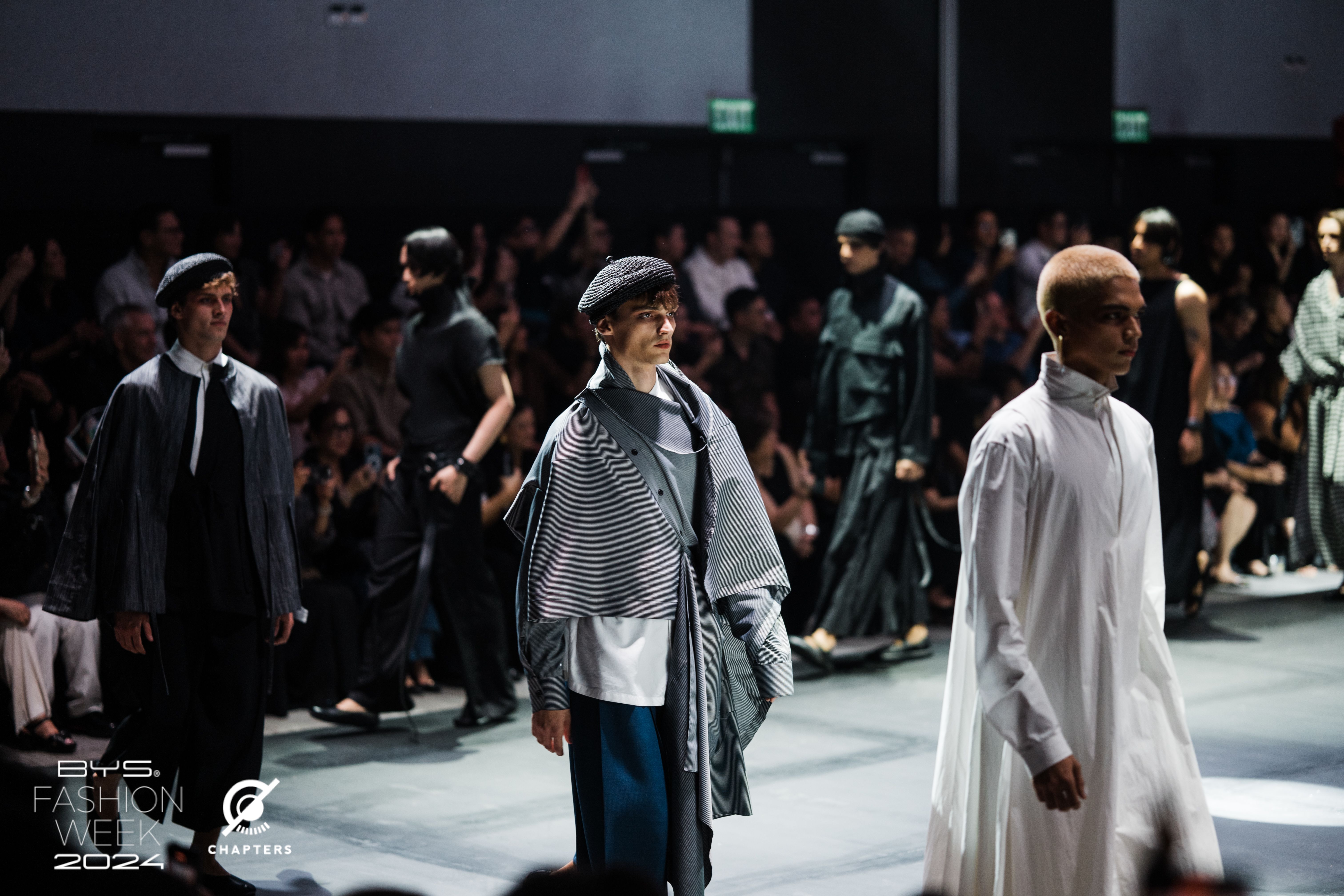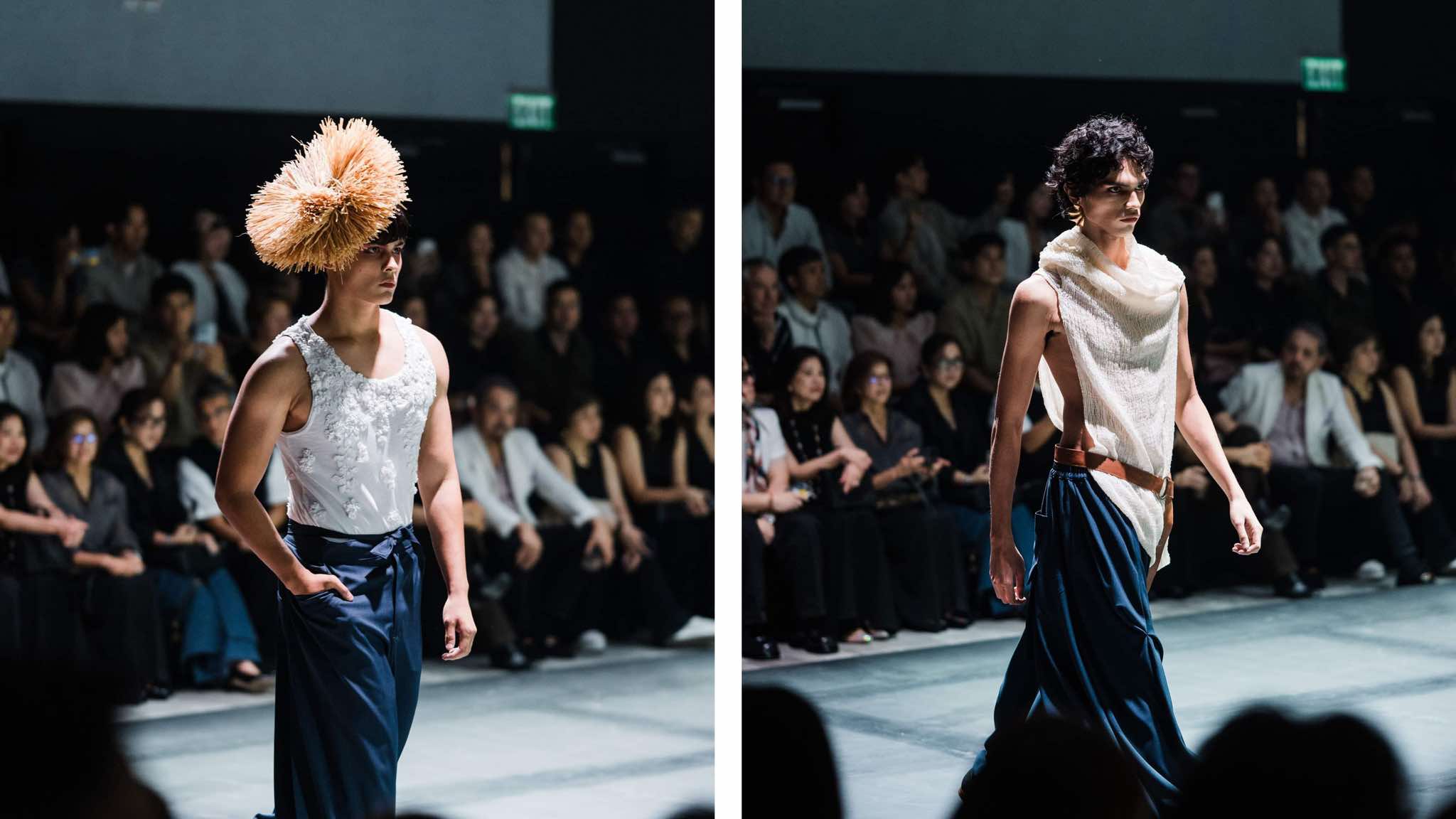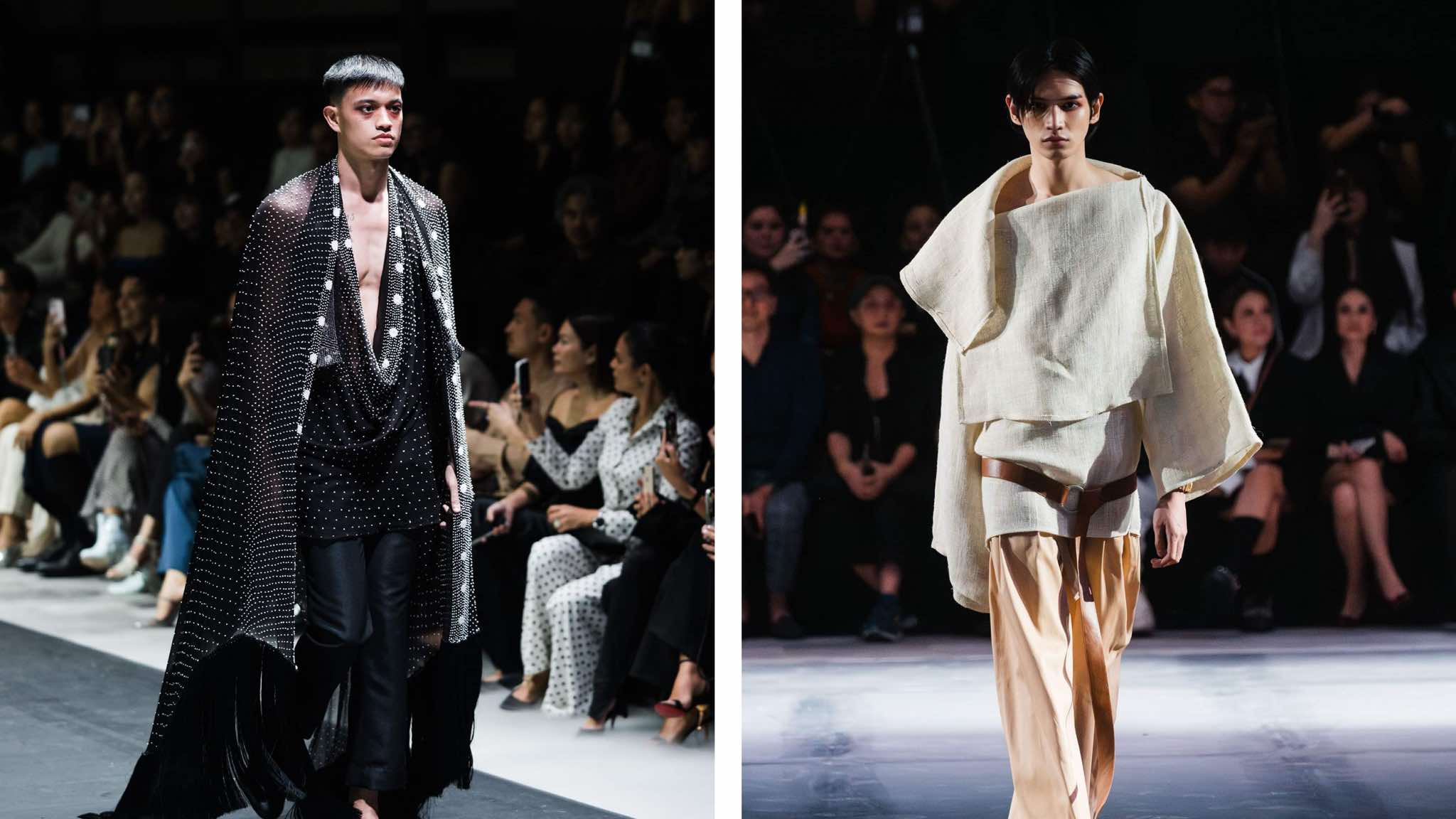Do clothes make the Rajoman?
Rajo Laurel does something he hasn't done before—an all-menswear collection
By AA Patawaran
“Where were you when I was alive?” cries John Wayne.
I tell this in jest to Rajo Laurel, who has been on top of his game as a fashion designer for decades. “It must be so tiring to be so macho all the time,” I add, remembering John Wayne, the quintessential Hollywood male, hero of the Westerns, embodiment of Cold War machismo, and, according to a 2017 profile in The Atlantic, “a hollow masculine icon,” who himself said in an interview in 1957, “That guy you see on the screen isn’t really me.”

We have this conversation the morning after the show “Pieces of Me,” in which Rajo unveils a menswear collection for Rajoman, the first in his decades-long, illustrious career in fashion, which he had heretofore devoted almost exclusively to dressing women.
I suppose that, had John Wayne seen the show, he might have had the idea that the virility, which he imposed upon the men of his time, thanks to the rigid instructions of his discoverer and mentor, the Western director John Ford, might really only exist in the movies, as he said so himself. According to a grandson of his, he was almost ashamed of his sensitivity.
Rajoman’s proposal, as presented in the 44 looks of the show he mounts at the Oct. 10 opening gala of BYS Fashion Week 2024 at the One Ayala Space, Makati, debunks the idea, long embedded in popular culture, that a man need be emotionally prohibitive, stolid, domineering, and invulnerable, if not even invincible.

What Rajoman presents is an exploration of the blurring of the lines between masculine and feminine, a toast to gender fluidity. Two of his muses—Donny Pangilinan and Nadine Lustre—wear somewhat of a counterpoint to the collection: Donny in his debut on the runway struts his stuff in a trench jacket and loose pants, both in beige, and a raffia beret in caramel while Nadine, the only woman in the cast of 44 models, rocks a gender-ambiguous look, especially for those in the audience unfamiliar to her, in a white midriff-baring tailored suit, a statement bib in the color of champagne and the shape of an ornate bow, and a new, never-before-seen-on-her hairstyle, the pixie cut.
“The inclusion of Nadine was something of my take on transgender and transmen,” says Rajo. “It’s an essay on the duality that lies in both men and women.”

What Rajo uses for the collection is materials not typically associated with menswear. “We used so many materials—wool, khaki twills, Egyptian cotton, illusion tulle, washed silks… I explored different kinds of fabrication, such as weaves,” he explains. “We had very raw linen, we had four-ply ramie that we used to create those large, almost oversized pants with very graphic details in terms of the shape, [we had] piña woven with lycra to give it texture.”
In terms of silhouettes, many of the pieces, boxy and loose, draw from Rajo’s personal aesthetic, as does the color scheme, the dominant shades in his personal wardrobe. “Very little color, so to speak—neutrals, white, black, beige, punctuated by a bit of red to break the storyline,” he laughs.
But what Rajo proposes through the collection underscores his exceptional grasp of the raging issues of our time, the most life-defining stories of the present day.

The night before Rajo’s debut in menswear, I was aghast to learn from the Netflix documentary The Menendez Brothers that in the second trial of Lyle and Erik Menendez before a single jury in a Los Angeles court, all evidence of sexual abuse the brothers purportedly suffered at the hands of their parents Jose and Kitty Menendez was withheld from the jury because, as the judge said, “They are not women.”
So watching Rajo’s “Pieces of Me,” as piece after piece takes its turn on the stage, I keep thinking that no man in the 1980s and the 1990s, especially not the Menendez brothers, neither Lyle nor Erik, especially not Erik, who has been accused of having issues with his sexuality, would dare wear any of the stuff, except maybe the one Donny Pangilinan has on. I keep thinking that in that judge’s mind, neither Lyle nor Erik could be a victim as much as neither of them could wear a skirt.
Just look at how far we’ve come in pursuit of gender freedom and the fight against gender stereotypes. Despite our misgivings about life as we live it now, it has over the past decade or so changed so much for the better in some aspects, such as in what we wear as personal expressions. In every piece Rajo proposes for Rajoman walks a man, who is man enough to show that side of his that is soft, that is vulnerable, that is sentimental, that is capable of wearing his heart on his sleeves, that is unapologetic about his dreams of beauty, grace, glamour, meaning and purpose, and love, along with its many complexities and permutations.

Rajo Laurel is always a standout, his work always a statement that speaks of what matters to us in our time through fashion, beyond fashion.
“Nowadays, men don’t always have to be tough. Softness is also strength. Manhood can be defined in a spectrum of sorts,” Rajo tells me. “I hope that with ‘Pieces of Me,’ I open a dialogue that men can be vulnerable, sensitive, soulful, sentimental. These are the things I am proposing to the discussion.”